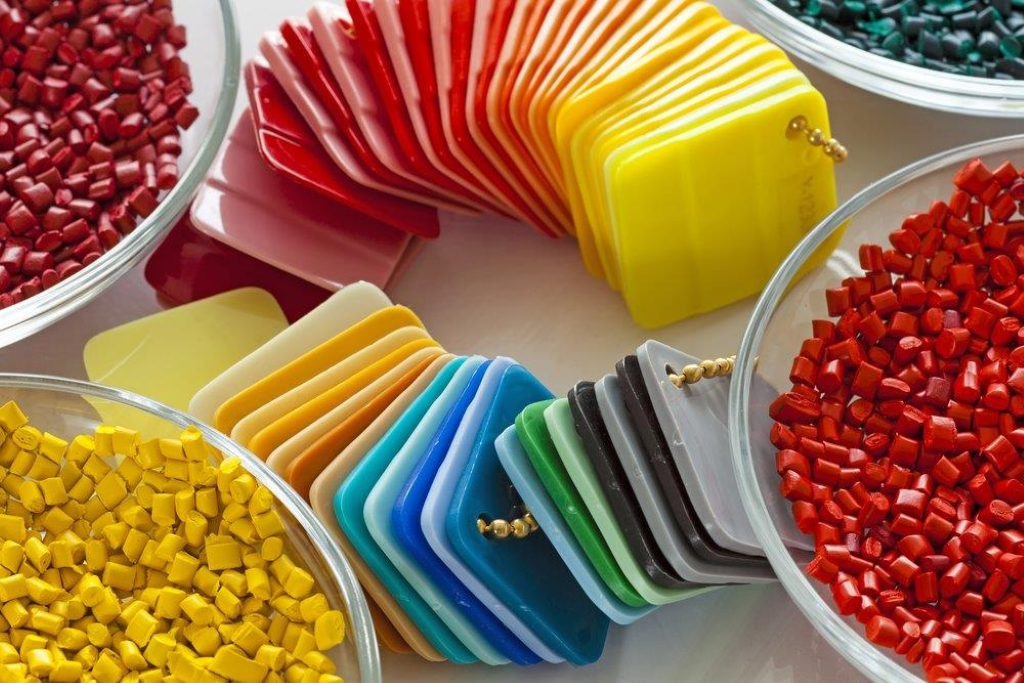Acrylonitrile Butadiene Styrene (ABS) is one of the most widely used thermoplastics in modern manufacturing. Its balanced combination of strength, flexibility, and resistance to impact makes it popular across automotive, electronics, toys, and construction. However, one of the most important properties that governs how ABS is processed and used is its melting point.
This article explains the ABS melting point, why it matters, and how it influences both manufacturing and real-world applications.
Read more: Why the Melting Point of Plastic Matters in Manufacturing?
1. What is the melting point of ABS?
Technically, ABS is an amorphous thermoplastic, meaning it doesn’t have a sharp melting point like crystalline materials. Instead, it softens over a temperature range. This softening range is typically between 200°C to 250°C (392°F to 482°F), depending on the exact formulation and processing requirements.
One of the most important thermal characteristics of ABS is its glass transition temperature, which is around 105°C. This is the point at which ABS begins to lose its rigidity and become soft and pliable. During processing, the material is typically heated to temperatures between 220°C and 250°C to ensure sufficient flow during molding or extrusion. Understanding these temperature thresholds is essential to prevent issues like poor surface finish or thermal degradation during manufacturing.

What is the melting point of ABS?
2. Why does the ABS melting point matter?
The melting point of ABS, or more accurately, its softening range, plays a critical role in determining how the material is shaped and applied. If the processing temperature is too low, ABS won’t melt uniformly, leading to incomplete mold filling or poor detail reproduction. On the other hand, excessive heat can degrade the polymer, resulting in discoloration, brittleness, or even the release of potentially hazardous gases.
Additionally, knowledge of ABS’s thermal limits informs the environments in which it can be reliably used. ABS maintains its structural integrity and mechanical properties well up to around 80–90°C, making it suitable for applications that don’t demand high heat resistance, such as electronics casings, automotive dashboards, and household products.
3. How ABS is processed based on melting point
ABS is valued in manufacturing largely because it is easy to mold and extrude, thanks to its moderate softening temperature. Injection molding is the most widely used method for processing ABS. During this process, the resin is heated to temperatures typically between 230°C and 250°C to ensure it flows well into the mold cavities, capturing precise details and forming strong bonds.
Extrusion is another common method, particularly for making pipes, sheets, and structural profiles. Here, maintaining the right viscosity without causing thermal breakdown is essential, which is why accurate temperature control based on the melting point is key.
ABS is also widely used in Fused Deposition Modeling (FDM) 3D printing. ABS filament typically requires an extrusion temperature of 220°C to 250°C, with a heated print bed maintained at 90°C to 110°C to prevent warping and promote adhesion. These settings are directly informed by ABS’s melting behavior.
4. Comparing ABS melting point to other thermoplastics
When evaluating thermoplastics for specific applications, it’s useful to consider how ABS compares with other commonly used materials. PLA, for instance, melts at a lower temperature range (about 180°C to 220°C), making it easier to print with but generally less durable and less heat resistant. PETG, on the other hand, melts at slightly higher temperatures (230°C to 260°C) and offers better impact and chemical resistance.
Nylon is another common engineering plastic, requiring processing temperatures between 220°C and 270°C. It boasts superior toughness and wear resistance, but its higher processing demands can be a drawback in some settings.
In comparison, ABS’s melting point positions it as a middle-ground option—offering a good balance between ease of processing and end-use performance.

Comparing ABS melting point to other thermoplastics
5. Real-world impact of ABS melting point
The practical implications of ABS’s melting characteristics can be seen across many industries. In automotive design, components such as instrument panels, door handles, and trims benefit from ABS’s ability to be molded with precision while enduring moderate heat and physical stress.
In consumer electronics, ABS is a material of choice for device housings—from televisions to keyboards—because it can be easily shaped and finished while offering sufficient durability and thermal stability for indoor use.
Even in the toy industry, ABS’s properties are widely utilized. LEGO bricks, one of the most famous ABS applications, rely on the material’s dimensional stability and moderate melting point to retain their shape and interlocking ability even in warm environments. This highlights how ABS’s softening temperature underpins both product performance and user experience.
6. Conclusion
The ABS melting point—or more accurately, its softening temperature range—is central to its functionality in modern manufacturing. This property dictates how ABS is processed, from molding to extrusion and even 3D printing. It also informs where and how the material can be applied, from car interiors and toys to consumer electronics.
With its balanced properties, including mechanical strength, impact resistance, and ease of fabrication, ABS continues to be one of the most versatile and widely adopted thermoplastics in industry.
7. About EuroPlas
EuroPlas, one of the world’s leading masterbatch and compound manufacturers, offers high-performance ABS compound solutions that cater to diverse industrial needs. With advanced formulation expertise, EuroPlas delivers ABS compounds that enhance impact resistance, dimensional stability, and surface finish—ideal for automotive interiors, appliance housings, consumer electronics, and more.
Produced in state-of-the-art facilities across Vietnam and Egypt, EuroPlas ABS compounds meet strict global standards while enabling cost-effective, reliable production for customers in over 95 countries. Currently, EuroPlas offers 3 ABS compounds:
To explore more about our ABS solutions, visit our Products page or read other Blog news. Don't hesitate to contact us if you have any questions!